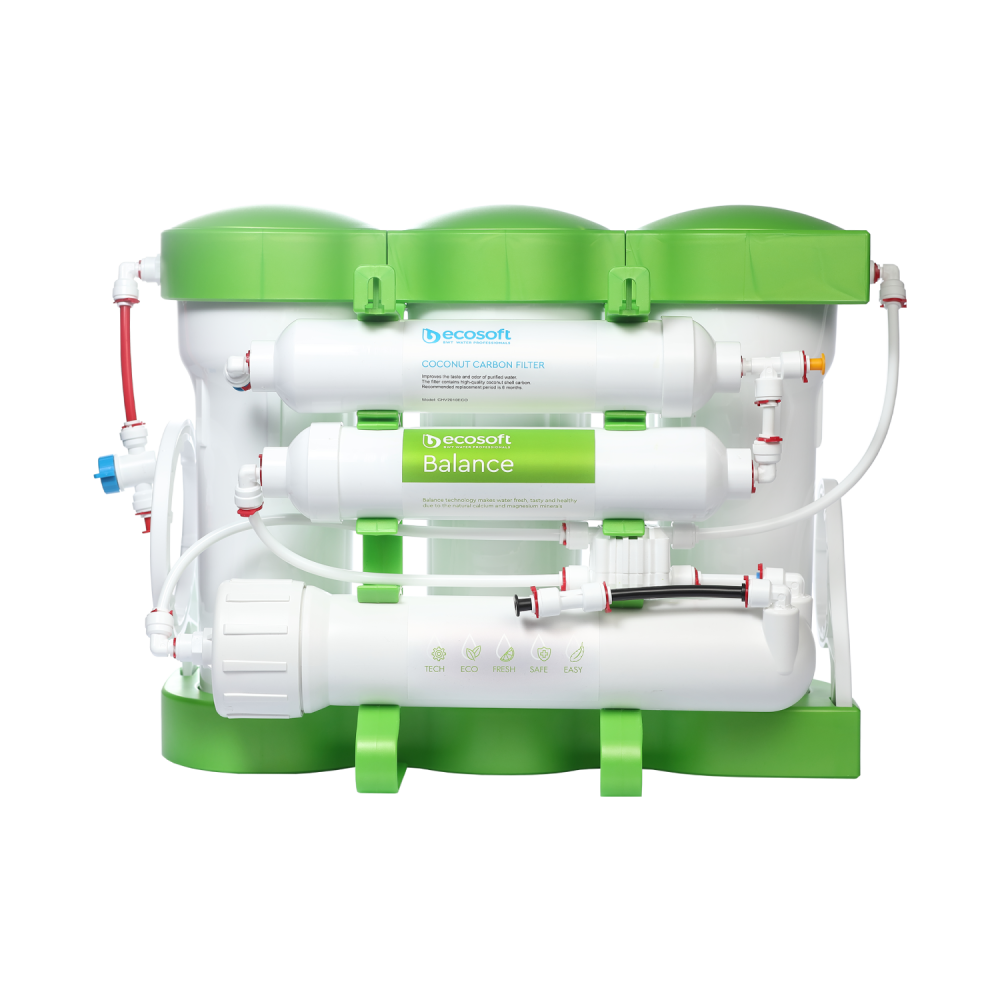REVERSE OSMOSIS
RANGES

What is Reverse Osmosis?
Reverse osmosis (RO) is a specific type of water filtration. It works by forcing water through a semi permeable synthetic membrane. The membrane is a thin film that allows water (H2O) to pass through it while holding back most contaminants. With a typical contaminant removal rate of 0.0001 microns, most cysts, bacteria, viruses, heavy metals, pharmaceuticals, pesticides are substantially removed, leaving you with purified water for use. These contaminants are then rinsed away to drain via a waste line.
Out of all the filtration methods, reverse osmosis drinking water system is the most popular as it removes the most contaminants and it is easy to operate.
Why do you need a RO drinking water system?
Water that leaves the treatment facility can pick up dangerous contaminants or undesirable tastes and odours by the time it shows up at your tap.
- Chemicals such as chlorine, or chloramines are added to the mains water supply to keep it free of harmful germs on its way to your tap. Although chlorine has been a literal lifesaver with regards to drinking water, it also has the potential to form by-products that can cause severe harmful health effects
- Silt, sediment, and other minerals can build up inside water mains and household plumbing.
- Unexpected spikes of lead due to construction activity or disturbance of water lines, metals release due to corrosion of piping or in-home plumbing, bacteria and other microorganisms might enter the system from pipeline breaks
- New contaminants that are not yet regulated but may be of human health concern were found in drinking water. Those are microplastics, pharmaceuticals, personal care products and industrial compounds such as plasticisers

Private well water might contain many dangerous contaminants which occur naturally in groundwater or as a result of agricultural activities. For example, nitrates and nitrites, arsenic and radionuclides, organic and inorganic matter, bacteria and other microorganisms might find their way through the pipes into your tap.
Whether your home is supplied by a mains water system or a private well, RO drinking water system is an optimal way to create a final barrier of protection against different types of water contaminants and ensure superior quality drinking water is available from the kitchen tap 24/7 giving you peace of mind.

How can RO systems help reduce carbon footprint?
RO systems provide a reliable source of purified drinking water, of quality as good as bottled water with less cost to the environment. Bottled water requires a significant amount of energy to produce, transport, and dispose of, resulting in gas emissions. By refilling a reusable water bottle with RO water instead of relying on single-use plastic water bottles contributes to reducing carbon footprint.
What Solution Is Right For You?

APLOS Range
- Point Number 1 - To be filled in
- Point Number 2 - To be filled in
- Point Number 3 - To be filled in

Ecosoft Range
- Point Number 1 - To be filled in
- Point Number 2 - To be filled in
- Point Number 3 - To be filled in
